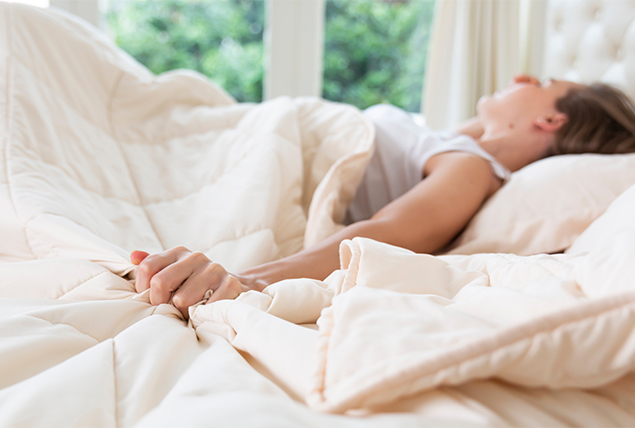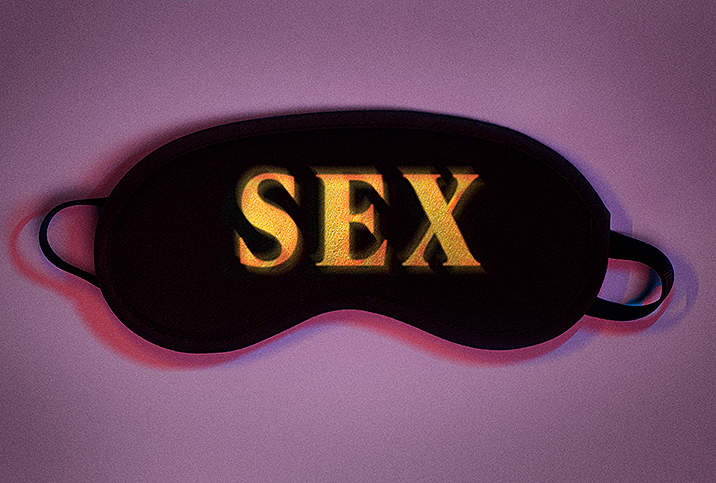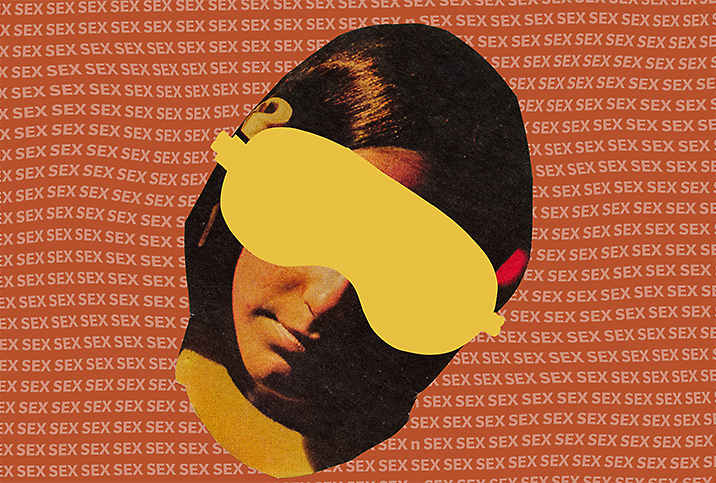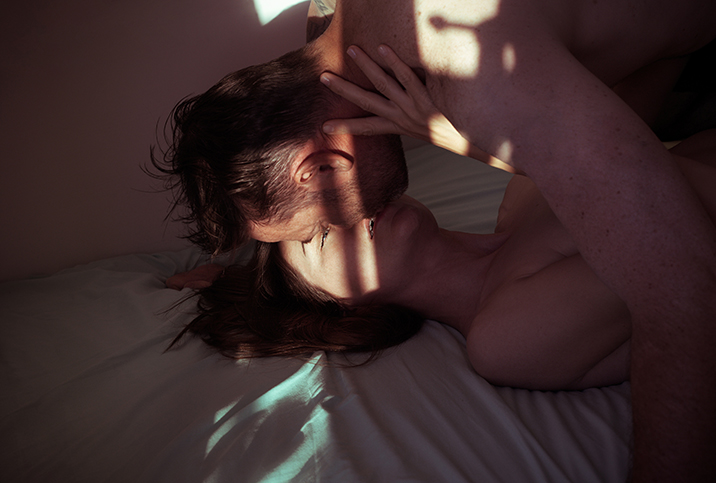Sleep Sex You Don't Remember? A Deep Dive Into Sexsomnia

Despite a lack of accumulated knowledge on the subject and a minimal amount of research being conducted on it, sexsomnia, a condition also known as sleep sex, really does exist and can cause major problems for people who have it.
"[Sexsomnia] is a type of parasomnia, where 'para' means 'alongside of' and 'somnus' means 'sleep,'" said Dan Ford, M.A., a licensed psychologist and certified sleep psychologist specializing in the treatment of behavioral sleep disorders. "Parasomnias are a type of sleep disorder characterized by undesirable events or experiences that occur with sleep—when you're entering into sleep, within sleep or waking up from sleep. Considered a variant of confusional arousals, the correct name is sleep-related abnormal sexual behaviors."
The sexsomnia experience
Sleep-related abnormal sexual behaviors occur during non-REM (NREM) sleep and involve abnormal sexual behaviors, such as masturbation, initiation of sex and/or loud sexual vocalizations while the person is asleep but in a state of arousal. This is usually followed by morning amnesia, Ford added.
It's not entirely known why sexsomnia happens, but some contributing factors are known:
- Illicit drug use
- Other sleep disorders, such as obstructive sleep apnea
- Poor sleep hygiene
- Sleep deprivation
- Sleep disruptors like caffeine or alcohol
- Stress
"I would suggest these [factors] lighten up sleep, making awakenings and arousals from sleep more common, which is when the person is more likely to enter the disordered sleep/awake state," Ford said.
One factor that can lead to sexsomnia is obstructive sleep apnea. While this may not be a hard-and-fast cause across the board, it has been found in people who experience NREM parasomnia.
In one case study, obstructive sleep apnea was indicated because "the space between the tongue base and roof of the mouth was very small and only the hard palate was visible, suggesting a higher chance of obstructive sleep apnea." The report was published in June 2021 and described a 42-year-old woman whose husband complained about her abnormal sexual behavior during sleep. She had no memory of the episodes and no dreams related to them.
Many people with sexsomnia also have a history of sleepwalking, sleep talking and/or sleep terrors.
"Forensic Evaluation of Sexsomnia," a research article published in the February 2021 edition of The Journal of the American Academy of Psychiatry and the Law, outlined typical events a person with sexsomnia may experience. However, it should be noted that since the person involved usually has no recollection of any activities occurring during an episode, "experience" may not be the right word to use in this context.
"Sexual acts performed while asleep include masturbation, spontaneous orgasm, sexual vocalizations, oral sex, anal sex, fondling another person, attempted intercourse and completed sexual intercourse," the study explained. Authors added that in one study of sexsomnia behaviors, 75 percent of the individuals who engaged in sexual activity while asleep were men.
How sexsomnia affects one's partner
"Sexsomnia is three times more common in males, so it can result in sexual molestation and assaults (of minors or adults)," Ford noted. "STDs [sexually transmitted diseases], unwanted pregnancies and sex with people you don't want to have sex with are all dangers."
Whether or not one's partner will know what exactly is happening is another story. It depends, according to Ford.
"Sometimes, the behavior is out of character, so it's easily identified as abnormal," Ford said. "Sometimes, it can be normal. As someone experiencing an episode may have open eyes and a vacant look, they may appear awake to others, making it difficult to tell in these situations."
It is safe to wake the person if you can tell they are asleep. Ford said the focus should be on harm reduction before thinking "should I wake/should I not wake?"
According to research, unconscious sleep-related sexual behavior often leads to adverse psychosocial impacts for the subjects and bed partners. In some cases, it can lead to physical injuries and sexual assaults.
For the 42-year-old woman mentioned above, her sexsomnia episodes created a dynamic of mistrust after her husband witnessed her masturbating in her sleep while moaning the name of one of her co-workers. On waking, the woman had no memory of this or even memory of dreams pertaining to this event.
Diagnosing sexsomnia
The Diagnostic and Statistical Manual of Mental Disorders, Fifth Edition (DSM-5) recognizes sexsomnia and lays out criteria for diagnosis.
"The diagnosis of sexsomnia requires a thorough clinical history, sleep history and collateral history," DSM-5 reads. "In addition, an overnight sleep study with full electroencephalogram (EEG) and video monitoring should be obtained in an effort to capture nocturnal sexual behaviors."
Ford echoed the information in the study, saying diagnosis is primarily based on a thorough clinical history interview.
"The interviewer will seek information about the nature of the patient's history of parasomnias, their sleep-related behaviors, co-occurring sleep disorders and physical and mental health disorders, and family history of sleep disorders," Ford said. "Interviews with current and past bed partners would be especially important as, understandably, the person with the parasomnia often doesn't have complete knowledge of their own parasomnia events.
"If there were legal implications or the possibility of secondary gains, then overnight in-lab polysomnography with continuous audio and visual monitoring would be indicated to gain objective documentation of the parasomnia."
Possible treatments for sexsomnia
The real treatments for sexsomnia come in the form of medications to treat the underlying causes, such as obstructive sleep apnea. Using an assisted-breathing machine while sleeping can also help. In some cases, sexsomnia patients benefit from cognitive behavioral therapy (CBT), which isn't a common treatment but could prove effective in some cases.
"Because [sexsomnia is] uncommon, treatment is an understudied area," Ford said. "Usually, this means there are case reports of treatment but no gold standard randomized controlled trials of treatment. Treatment advice is going to follow the general treatment advice for parasomnias such as sleepwalking."
Ford offered some nonmedication treatment options:
- Ensure the safety of the patient and others in the household and install door locks/alarms where needed.
- Educate the patient on sleep and parasomnias, and deal with potential "priming" factors disrupting sleep such as stress, sleep debt, irregular sleep/wake patterns, and alcohol and caffeine intake. General sleep hygiene education would be included here.
- Reduce the impact of "triggering" factors, such as concurrent sleep disorders increasing arousal. For example, there are numerous cases of treatment of obstructive sleep apnea clearing up sexsomnia/parasomnias, such as medications (e.g., some selective serotonin reuptake inhibitors—SSRIs—and some hypnotics), other drugs (e.g., cannabis), noises and physical contact.
"There are small, uncontrolled studies of hypnosis being somewhat effective in managing parasomnias, and CBT for managing stress has also been shown to be effective," Ford said. "Because treatment is about reducing arousals from slow-wave sleep that put the person into a 'between' state of sleep/wake, we've found CBT for insomnia to be effective in some cases as this treatment tends to deepen and consolidate sleep, reducing sleep fragmentation."
Ford has some advice if you're considering treatment using a medical approach.
"Generally speaking, clonazepam or a long-acting benzodiazepine would be indicated and some studies have shown these to be effective in up to 80 percent of general parasomnia patients," Ford said.


















